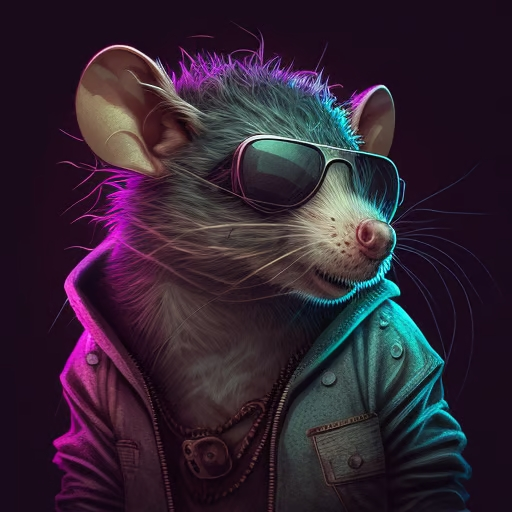Yeah. Because there’s no good answer. Anything you do will be massively unpopular. Trying to get people to stop eating beef or dairy is going to be very difficult.
Once lab grown meat is affordable maybe it’ll help.
Nah, just make the alternatives cheaper and a significant portion of people will switch. The biggest barriers to alternatives are habit and cost.
Nah, just make the alternatives cheaper
Or make the animal stuff more expensive; same difference.
Chicken is already significantly cheaper. People still buy tons of beef.
Mostly cost tbh
Not subsidizing the meat industry would be a start
As it was mentioned earlier that would be wildly unpopular.
Maybe stop subsidizing corn. It would make ethanol more expensive (good because it’s worse for the environment than normal unleaded) and it would make beef more expensive
But do they find it tasty?
Bessie says it adds a certain umami flavor to her hay
Yeah, I saw that as well. It’s very neat and I hope that 50% reduction is seen in all cattle breeds with just a small supplement of seaweed. If it’s effective without strong side effects, I imagine we’ll synthesize whatever chemical is inhibiting the methane production and it’ll become a standard feed supplement.
“This could help farmers sustainably produce the beef and dairy products we need to feed the world,” Roque added.
Absolutely not the case for beef cattle. They are far too expensive to raise and feed to be a hunger concern. They take so much land and food compared to how many calories you get from the beef. Pretty much every other animal is easier to raise and feed. There’s a reason pretty much no culture or religion bans consumption of goats or sheep; they are critical. Beef is a luxury food.
There’s a reason pretty much no culture or religion bans consumption of goats or sheep; they are critical.
Not the baseline poor people staple over here either, though, that’d be chickens, as well as one or two pigs, as scrap eaters: One to sell, one to turn into bacon by hanging it into the chimney. Sheep have a crucial role but as lawn mowers and soil compactors on dikes, also wool in the past but nowadays (non-merino) wool is basically worthless, as in often not even recouping the costs of shearing. The meat is certainly eaten but as said it’s neither a staple, or crucial ingredient of some classic dish. Eating game is more common. Heck horse overall might be more common. Goats really aren’t a thing at all.
What’s that heathen land where lamb is not considered the best meat?
Jutland in general. And really it’s less about the meat being good or bad, it is good, but we really rather have our sheep patrol the dikes and keep them healthy than eat them. Eating lamb while you’re wading in water leaves a nasty aftertaste.
Sheep are really as if made for that purpose: Unlike cows they cut the grass off clean instead of half ripping it out, and unlike horses their hooves don’t dig up the ground, but rather firm it up. Net result is healthy and short grass and thus a well-secured dike.
Looks cool.
I really like it when people solve complex tasks with simple and natural means.
Same goes for analog electronics and 60s-80s ideas of the future of technology.
Only about keeping the grass short - why? Is it for the ground to dry faster?
Avoiding other plants to take root, in particular ones with deep roots as they would form weak points in the dense felt-like root system grass has. Also ease of inspection.
There’s about a millennium of engineering experience in those dikes… and plenty of historical compromises. Like, we knew back in the middle ages that flat profiles secured by grass are the most stable and secure but they require massive amounts of material so it was necessary to use inferior dikes with vertical faces made of wood planks. Most recent notable innovation is sand cores and ditches behind the dike to manage seepage water (behind meaning on the land side, always confuses them tourists), and some minor alterations to geometry to improve the way waves hit it.
We probably knew that sheep were good for dikes before we built them as, at least in principle, dikes are nothing but a warft with a hole in the middle and we’ve built those since time immemorial.
And in case you’re wondering yes we’re raising them quite a bit higher in anticipation of sea levels rising. Completely uncontroversial decision, only question was whether to rise the dikes very high, or use the same budget to raise them not as high, but wider, so that they can easily be made even very higher in the future. We went with the latter option, which is kinda optimistic and pessimistic at the same time.
Right. For sheep/goats I was mostly talking about history.
Chickens are definitely the preferred animal in a lot of the world both in subsistence and when countries raise meat.
I imagine we’ll synthesize whatever chemical is inhibiting the methane production and it’ll become a standard feed supplement.
Hopefully, it can be produced by some type of GMO grass and can be sown into hay fields.
There’s a reason pretty much no culture or religion bans consumption of goats or sheep; they are critical. Beef is a luxury food.
And lamb is so much tastier than beef. Lamb barbecues, lamb chops, lamb broth, lamb kyafte.
EDIT: source. You may not like it but I’m not pulling this out of my ass.
Also wild ruminants cause similar, almost identical, CO2 emissions compared to pasture cattle. And if you’re re-wilding all those areas wild ruminants will be exactly who’s going to live on there, burping all that carbon plants sequestered right back up into the atmosphere.
There’s plenty of levers to pull when it comes to climate change, this isn’t one of it. On the contrary, it’s likely to be better to continue managing those ruminants because then we can feed them stuff that makes them burp straight CO2 instead of methane.
The actually big topics are transportation and heating, both should be (almost) completely electrified and electricity production switched to renewables (or nuclear, don’t wanna fight with you guys right now you’re free to pay more for your electricity if you want), and then further on industrial processes. Not doing things like waste heat capture nowadays is plain silly (though we need better district heating infrastructure to enable full penetration), chemical feedstock and things like steel smelting will require a proper supply of green hydrogen. “Muh there won’t be hydrogen cars” I don’t care. We still need the infrastructure.
What are you talking about?
The intensity of dairy and beef farming is magnitudes beyond what any natural population of cattle would look like. Also natural populations are in balance with each other. So if there would be more baby cows more predatory animal babys follow and eat them.
Your argumentation is started on a completely false premise and absurd.
sigh
citation. Things differ a bit depending on exactly what kind of environment you’re looking at but that’s still the rough ballpark. Yes, non-pasture farming looks different – but the area used to grow soy now would still sequester carbon, and it’d still be released back into the atmosphere by animals that eat it. Forests etc. aren’t bottomless CO2 sinks.
The intensity of dairy and beef farming is magnitudes beyond what any natural population of cattle would look like.
I don’t think you have a proper picture of what a natural ruminant population looks like. To give you a proper sense, Imagine a galloping Bison herd stretching, in a not exactly thin line, from horizon to horizon.
There’s green stuff to be eaten. As long as that’s there, the population of animals eating green stuff increases. Simple as that. It’s part of the natural CO2 cycle, to go ahead and say “let’s ‘fix’ the natural CO2 cycle so we don’t have to fix the man-made one” is ecologically naive.
A close to natural “population density” of cows is in the magnitudes of 1 cows per hectare of green land. Factory farms have hundreds of cows per hectare. So if the total population of cows would go down to 0-1% of todays farmed amount, that would reduce the GHG emission impact down to a negligible amount.
You are inventing a problem that doesn’t exist to justify the continuation of factory farming.
Factory farms have hundreds of cows per hectare.
Surrounded by vast supporting fields which have none. Please, try to get a whole-picture view of anything before you post, don’t accost me with over-reductive narrow-focus BS, this is almost “The US has more people per capita” type of comical. Also, don’t just knee-jerk dismiss a link to a paper in Nature, of all journals.
So if the total population of cows would go down to 0-1% of todays farmed amount, that would reduce the GHG emission impact down to a negligible amount.
No. And if you read the paper, you’d understand why.
You are inventing a problem that doesn’t exist to justify the continuation of factory farming.
I’m opposed to factory farming. For other reasons. Biodiversity, for one.
I read the paper you linked. Are you seriously suggesting that if we stopped animal agriculture, wild animals would flood the countryside to the same extent as in the Kenya study? I don’t think that is broached by the study at all.
A single study will not tell you everything about everything. No, ruminants will not just magically appear in the landscape, we’re living in a causal universe, after all.
Suppose, for the sake of argument, that all ruminants indeed all grazers (also deer, giraffes, whatever) are extinct. Plants will flourish, not being eaten by them, then individual plants, or parts of them (falling leaves etc) will die as part of their normal life/reproduction cycle – and get eaten by fungi, bacteria, etc. Which will burp CO2 and probably other greenhouse gases.
The condition for nature to produce CO2 are simple: The presence of carbon in a form that can be oxidised, such as sugar and starches of which plants produce plenty, the presence of oxygen, and a critter, any critter, that can do it. Even if it’s just a single species, it’s going to eat the whole thing and release all the carbon back into the atmosphere. Consuming available energy to reproduce itself is literally what life is all about.
If there’s energy around that can be used, nature will use it. Have a look at the most biodiverse and productive ecosystem in the world, the Amazon rain forest: It has very poor soil because as soon as something dies, its remains are recycled by something else. Destroying the Amazon rain forest releases CO2, again planting stuff there re-captures it, but reconstituted forest doesn’t continue to sequester carbon indefinitely: Only until it has accumulated the amount of carbon that it needs to sustain itself, after that it’s going to be carbon-neutral.
You may be asking “but then how did all that oil and coal end up in the soil”: Highly specific circumstances: Plants were producing stuff that critters couldn’t eat. But we’re currently not in that situation and in fact critters seem to be ludicrously efficient at evolving to break up new compounds. PET was first synthesised 1941, in 2016 scientists found critters which can eat it – producing CO2 in the process, of course. That’s exactly what’s going to happen to all that herbivore-free land you envision. If we want to sequester carbon, care has to be taken that nature won’t dig it up again.
Lots of different estimates, but looks like between 11% and 20% of ghg emissions are livestock. That’s way higher than I thought.

And that’s without accounting for the feed iirc, which is the majority of our farmland. Then we have to water that shit, grow it, transport it to the livestock so they can eat it, etc.
It’s incredibly resource intensive to raise a living being.
Edit: I didn’t even touch on all the deforestation for livestock feed, which is a whole other conversation
I didn’t even touch on all the deforestation
the paper does, and it’s deeply flawed. no one should trust these over simplifications of our vastly complex agricultural systems.
that’s without accounting for the feed
it’s not, and the methodology is flawed.
Gotta be flawed if it says animal-based foods are only 2x as bad as plant based ones lol. Talk about an understatement
I wonder if fossil fuel companies are pushing these stories to undermine support for climate change policies.
I wonder if dairy and beef companies are funding these sorts of dismissive replies
Removed by mod
Removed by mod
Bye Tucker Carlson.








